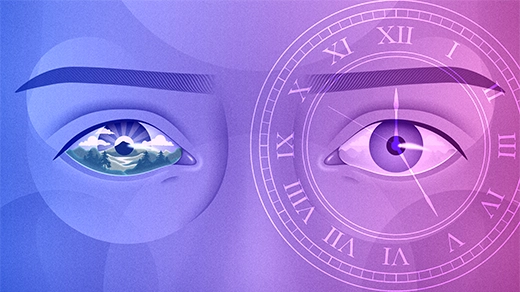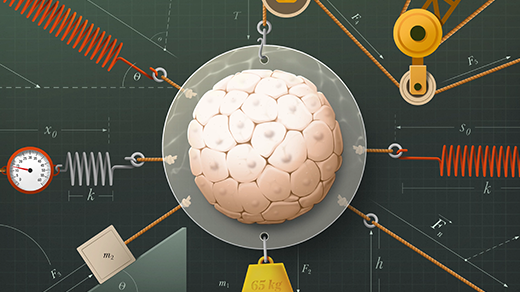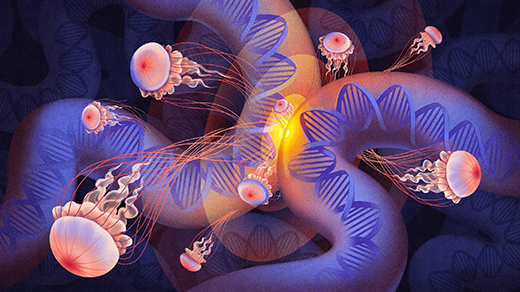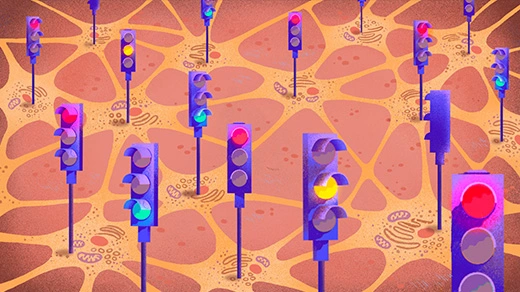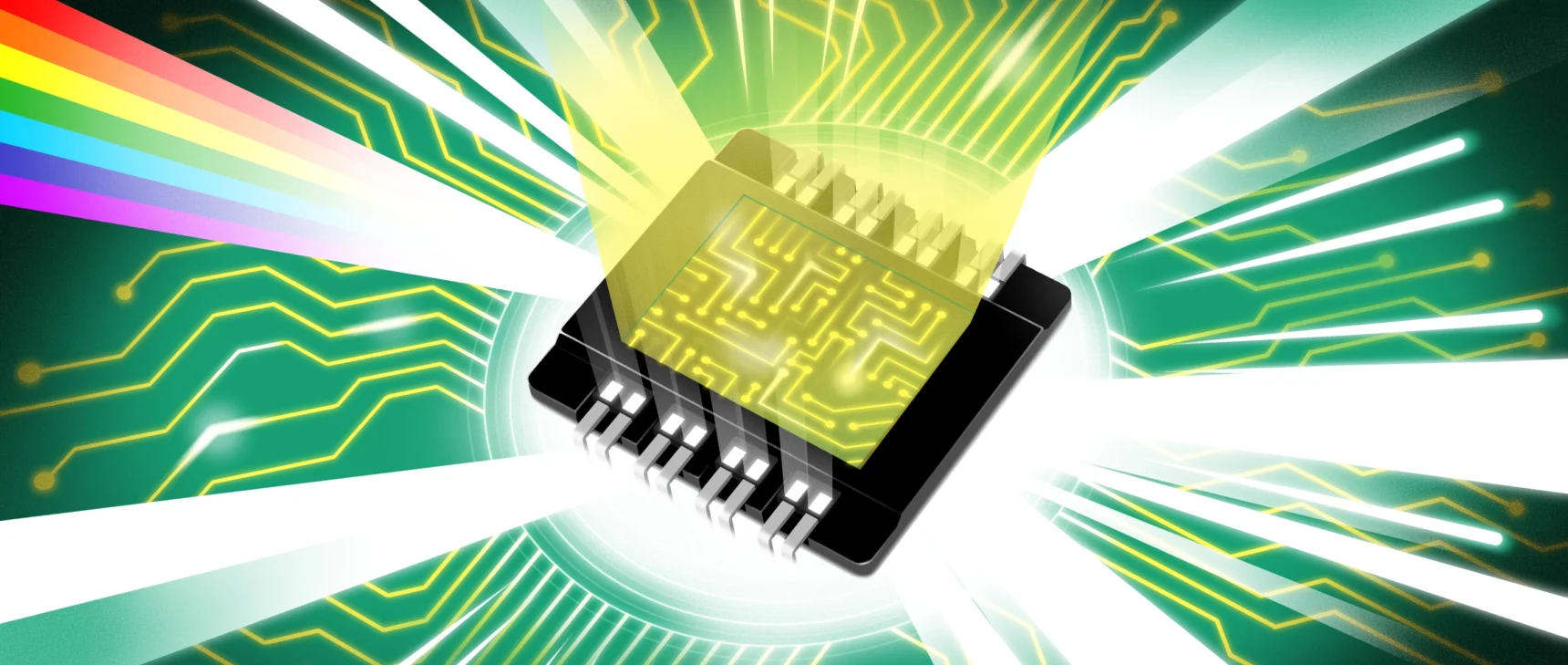Electric ‘Ripples’ in the Resting Brain Tag Memories for Storage
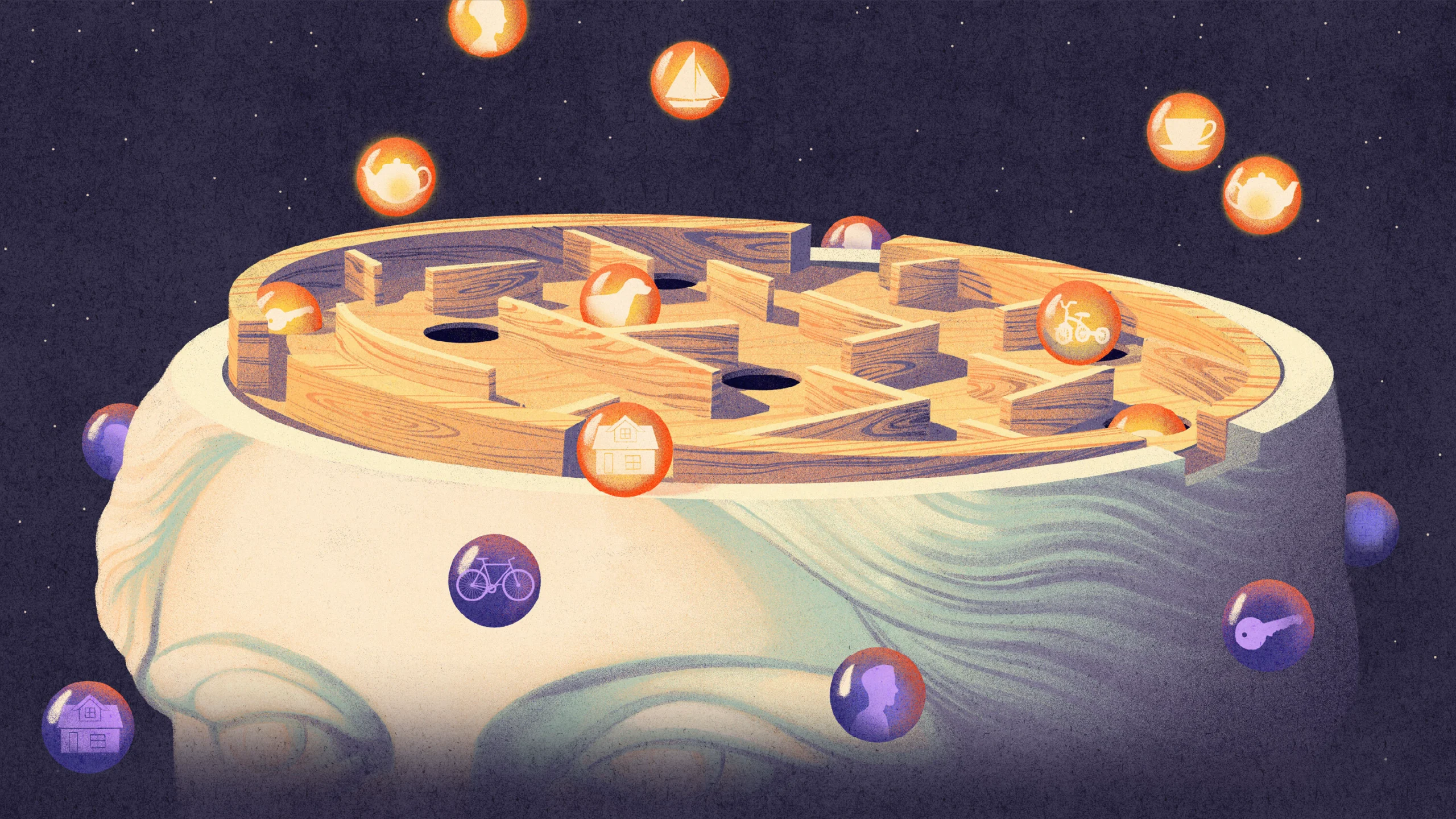
Bursts of electrical activity, known as “sharp wave ripples,” occur when we’re awake and resting. A new study suggests that they flag experiences for the brain to store as long-term memories later when we’re asleep.
Myriam Wares for Quanta Magazine
Introduction
György Buzsáki first started tinkering with waves when he was in high school. In his childhood home in Hungary, he built a radio receiver, tuned it to various electromagnetic frequencies and used a radio transmitter to chat with strangers from the Faroe Islands to Jordan.
He remembers some of these conversations from his “ham radio” days better than others, just as you remember only some experiences from your past. Now, as a professor of neuroscience at New York University, Buzsáki has moved on from radio waves to brain waves to ask: How does the brain decide what to remember?
By studying electrical patterns in the brain, Buzsáki seeks to understand how our experiences are represented and saved as memories. New studies from his lab and others have suggested that the brain tags experiences worth remembering by repeatedly sending out sudden and powerful high-frequency brain waves. Known as “sharp wave ripples,” these waves, kicked up by the firing of many thousands of neurons within milliseconds of each other, are “like a fireworks show in the brain,” said Wannan Yang, a doctoral student in Buzsáki’s lab who led the new work, which was published in Science in March. They fire when the mammalian brain is at rest, whether during a break between tasks or during sleep.
Sharp wave ripples were already known to be involved in consolidating memories or storing them. The new research shows that they’re also involved in selecting them — pointing to the importance of these waves throughout the process of long-term memory formation.
It also provides neurological reasons why rest and sleep are important for retaining information. Resting and waking brains seem to run different programs: If you sleep all the time, you won’t form memories. If you’re awake all the time, you won’t form them either. “If you just run one algorithm, you will never learn anything,” Buzsáki said. “You have to have interruptions.”
During those interruptions is when the fireworks go off.
The Brain’s Rehearsal
Buzsáki will never forget the first time he heard a sharp wave ripple. It was 1981, and he was a postdoc at the University of Western Ontario listening to the brain activity of anesthetized rodents through a loudspeaker. After about nine years of research, he had become accustomed to the rhythmic, melodic oscillations that sounded as the awake animals explored their environments. He wasn’t prepared for the sudden “bong” that blared through his speaker when the rodents were asleep.
To Buzsáki, the sound was as profound as the dramatic refrain in Beethoven’s 5th symphony. “Da da da da,” he sang as he recalled his shock. And then another bong: “Da da da da.”
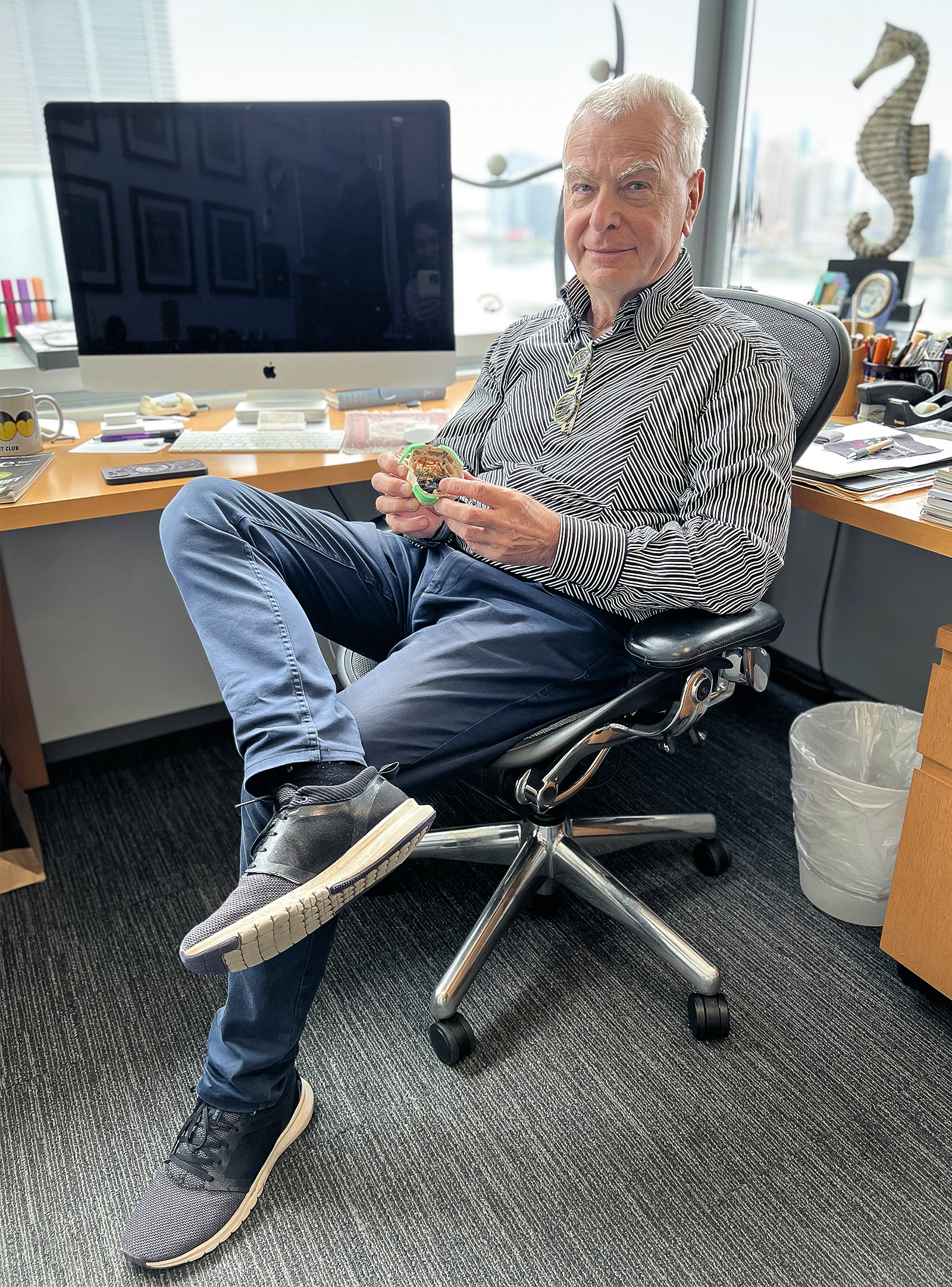
As a child, György Buzsáki tuned in to radio waves. Now, as a professor of neuroscience, he tunes in to brain waves to study how electrical activity from neurons consolidates and stores long-term memories.
Yasemin Saplakoglu
What was going on? The rodents’ waking brains had generated electrical activity that oscillated at a constant rate. When they were anesthetized, however, their brains seemed to irregularly fire off much faster patterns.
Other researchers had observed the fast waves too. Buzsáki’s postdoctoral adviser Cornelius Vanderwolf had described the irregular patterns in 1969, and the Nobel Prize-winning neuroscientist John O’Keefe coined the term “ripples” to describe them in the 1970s. But it wasn’t until Buzsáki heard them for himself that he became obsessed.
He spent much of his lab time over the next decade trying to characterize these electrical bursts. In the late 1980s, researchers discovered that they could induce neurons to make stronger interconnections, linked to learning and memory, by artificially stimulating them to fire in rapid bursts. To Buzsáki, those bursts sounded a lot like his waves. In 1989, he first hypothesized that sharp wave ripples might be part of the brain’s mechanism for forming and consolidating memories.
“He had the idea that this was not some noisy activity, but it was relevant for the brain,” said Michaël Zugaro, a neuroscientist at the Collège de France who worked as a postdoc in Buzsáki’s lab in 2002. “That was a great anticipation of future discoveries because at the time very little was actually known.”
In the 1990s and early 2000s, researchers took advantage of improved computing power and new tools that could record electrical activity from over 100 neurons at once to better characterize sharp wave ripples. Buzsáki and other scientists discovered that the ripples seemed to replay brain activity from an animal’s experience, such as running through a maze — except that the replay ripples oscillated 10 to 20 times faster than the original signals. One 2002 paper, which “made sharp wave ripples very famous,” said Hiroaki Norimoto, a professor of neuroscience at Nagoya University in Japan, found that sharp wave ripples reactivate a sequence of neuronal activity.
In 2009 and 2010, two papers, including one led by Zugaro, showed that sharp wave ripples were involved in consolidating memories to endure over the long term. When researchers suppressed or disrupted the ripples, rats performed worse on memory tasks. “When you destroy them, then the animal no longer remembers,” Zugaro said. Later studies showed that elongating or creating more ripples improved rats’ memory.
It became clear that the ripples were playing repeatedly to cement a memory. “The brain is rehearsing,” said Lila Davachi, a professor of psychology at Columbia University. “Even in these moments of wakeful rest, your brain continues to rehearse and replay the past.”
Imagine an experience as “a melody on the piano,” said Daniel Bendor, a neuroscientist at University College London. A specific sequence of neurons fires to record an experience, just as a pianist taps out a specific sequence of keys. Then, during sleep, the hippocampus replays that sequence — but faster and potentially hundreds or thousands of times. The frenetic sharp wave ripples propagate out from the hippocampus, a way station in the brain for “episodic memories” of particular experiences, toward the cortex, which is involved in long-term memory storage.
However, no one could explain why the ripples propagated while an animal was awake and resting. “[They] must serve some other purpose,” Bendor recalled thinking. Scientists had many ideas. Some proposed that waking ripples helped with planning or decision-making. Others suggested that they modified or reallocated memories in some way.
Another idea, which several groups proposed, was that replay while an animal was awake and replay during sleep were intimately tied — and that they could be the mechanism by which the brain chooses what experiences to remember.
Memory Trials
At NYU, boxes of resting and sleeping mice sat in an infrared-lit room. In the room next door were handcrafted mazes, constructed from plastic and tape. One at a time, the mice were placed in the mazes. They ran around, wearing electrodes that recorded the activity of around 500 hippocampal neurons, and learned that certain routes would earn them a reward of water. As they explored the maze, the mice took small breaks to rest or groom themselves. And after their trials were over, they were returned to their home cage for a snooze. The researchers continued to record their brain activity as they slept.
Yang analyzed the data by mapping which neurons fired during different trials. She saw a lot of variation — some neurons fired during early trials, and others fired during later ones. Sometimes they fired at different rates. That told her that the brain recorded an animal’s experience of individual trials differently. Notably, some trials were followed by bursts of sharp wave ripples, while others weren’t.

Wannan Yang analyzed bursts of brain activity known as sharp wave ripples that played while mice were resting and while they were asleep. When the animals rested, ripples replayed neuronal sequences that had occurred in the maze. Later, during sleep, those sequences were replayed again to form long-term memories.
Chen Sun
Then she compared the brain activity recorded during the mice’s maze experiences to the related ripples that appeared later. The trials that replayed more frequently as the mice rested were the same trials that replayed as they slept. And the trials that were not replayed when the mice were awake weren’t replayed during sleep either.
The team concluded that the resting ripples might be a mechanism by which the brain prioritizes experiences to remember. “Maybe awake ripples are those memory tags” that consolidate certain experiences for long-term storage, Yang said. “On the contrary, those that are not tagged are not replayed during sleep, and they will be forgotten.”
“There has to be some kind of triage to remember what is relevant and forget the rest,” Zugaro said. “Understanding how specific memories were selected for storage was still lacking. … Now we have a good clue.”
Last December, a research team led by Bendor at University College London published related results in Nature Communications that anticipated those of Yang and Buzsáki. They too found that sharp wave ripples that fired when rats were awake and asleep seemed to tag experiences for memory. However, their analysis averaged a number of different trials together — an approach less precise than what Yang and Buzsáki accomplished.
The NYU team’s key innovation was to bring the element of time, which distinguishes similar memories from one another, into their analysis. The mice were running around in the same maze patterns, and yet these researchers could distinguish between blocks of trials at the neuronal level — a resolution never reached before.
The brain patterns are marking “something a little bit closer to an event, and a little bit less like a general knowledge,” said Loren Frank, a neuroscientist at the University of California, San Francisco who was not involved in the research. “That strikes me as a really interesting finding.”
“They’re showing that the brain is maybe creating some kind of temporal code to distinguish between different memories occurring in the same place,” said Freyja Ólafsdóttir, a neuroscientist at Radboud University who was not involved with the work.
Shantanu Jadhav, a neuroscientist at Brandeis University, praised the study. “This is a good start,” he said. However, he hopes to see a follow-up experiment that includes a behavioral test. Demonstrating that an animal forgot or remembered particular trial blocks would be “the real proof that this is a tagging mechanism.”
The research leaves a burning question unanswered: Why is one experience chosen over another? The new work suggests how the brain tags a certain experience to remember. But it can’t tell us how the brain decides what’s worth remembering.
Sometimes the things we remember seem random or irrelevant, and surely different from what we’d select if given the choice. “There is a sense that the brain prioritizes based on ‘importance,’” Frank said. Because studies have suggested that emotional or novel experiences tend to be remembered better, it’s possible that internal fluctuations in arousal or the levels of neuromodulators such as dopamine or adrenaline and other chemicals that affect neurons end up selecting experiences, he suggested.
Jadhav echoed that thought, saying, “The internal state of the organism can bias experiences to be encoded and stored more effectively.” But it’s not known what makes one experience more prone to being stored than others, he added. And in the case of Yang and Buzsáki’s study, it’s not clear why a mouse would remember one trial better than another.
Buzsáki remains committed to exploring the roles that sharp wave ripples play in the hippocampus, although he and his team are also interested in potential applications that might arise from these observations. It’s possible, for example, that scientists could disrupt the ripples as part of a treatment for conditions like post-traumatic stress disorder, in which people remember certain experiences too vividly, he said. “The low-hanging fruit here is to erase sharp waves and forget what you experienced.”
But for the time being, Buzsáki will continue to tune in to these powerful brain waves to uncover more about why we remember what we do.
Correction: May 22, 2024
A sentence was revised to clarify the results of a 2002 paper published in Neuron.
